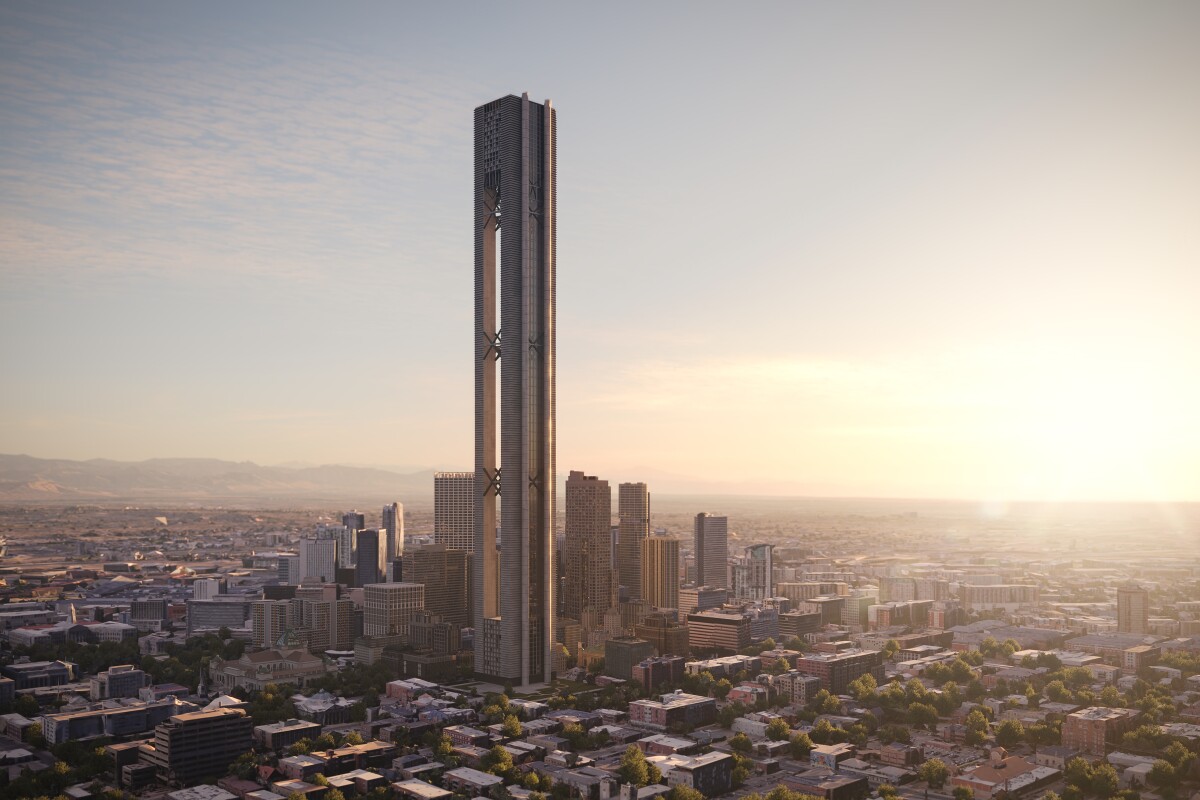
We can imagine it all and at some level you may well have a practical solution. just where is the energy coming from? My preferred solution is an equally giant cooling tower which taps the atmospheric pressure gradient to continously produce severl gigs of electrical power like Niagra Falls and this needs such a storage facility to optimise grid application.
all this should be within our present engineering capabilities and once done, can be replicated globally in all urban complexes large enough..
Kilometer-tall skyscrapers to double as massive batteries
June 04, 2024
SOM and Energy Vault Holdings envision the energy storage skyscrapers reaching a height of up to 1,000 m (3,280 ft), which would make them the tallest buildings in the world
SOM/Energy Vault Holdings
https://newatlas.com/architecture/som-energy-vault-holdings-skyscraper-gravity/
Skidmore, Owings & Merrill (SOM), the designer of the world's tallest building, Dubai's Burj Khalifa, has joined forces with Energy Vault Holdings to investigate the possibility of creating something even taller: huge 1-km [3,280-ft]-tall skyscrapers that would also function as gigantic gravity based energy storage systems.
The proposal features two particularly notable ideas. The first brings to mind research from the likes of Gravitricity and IISA, and would use excess energy – whether from renewable sources like solar or from a standard power grid – to raise a weight up to the top of a very tall skyscraper. When required, the weight is then released, allowing it to descend to the bottom of the building, harnessing the force of gravity to drive a generator.
"EVu is a superstructure tower design, which improves unit economics and enables GESS [gravity energy storage systems] integration into tall buildings through the use of a hollowed structure with heights over 300 meters [roughly 984 ft], and up to 1,000 meters [3,280 ft] tall," explains the press release by SOM and Energy Vault Holdings. "These structures will have the capacity to reach multi-GWh of gravity based energy storage to power not only the building itself but also adjacent buildings' energy needs. This innovative design which integrates leading GESS technology within superstructure building design and engineering will, for the first time in building construction and operation history, enable a carbon payback within accelerated timeframes of 3-4 years."
SOM and Energy Vault Holdings' ideas are still very early in the design stage
SOM/Energy Vault Holdings
Alongside the EVu gravity system above, the team also proposes the so-called EVc system. This would function similarly but instead of a large weight, it would pump water to the top of the skyscraper then drop it to run turbines and produce power.
Though it might sound futuristic, we do already have quite a lot of similar systems in place for pumped-storage hydroelectric power stations. Water is released from a mountain or hill for example, generating electricity by spinning turbines as it flows downhill and providing more electricity when it's needed. When excess juice is again available, the water is pumped back up to the top, ready to start the process again.
Though the basic science behind both ideas is sound, the practical challenges are considerable, and include issues like being able to support all that extra weight, plus efficiency and general maintenance. Perhaps the largest stumbling blocks are the most tedious though: the amount of space it would take up plus all the moving parts could make building an office or residential skyscraper with this system simply economically unfeasible.
Take this one with a pinch of salt for now, then. However, there is some serious talent behind the collaboration, including Bill Baker, who co-created the Burj Khalifa, so we'll be interested to see if it goes anywhere.
No comments:
Post a Comment